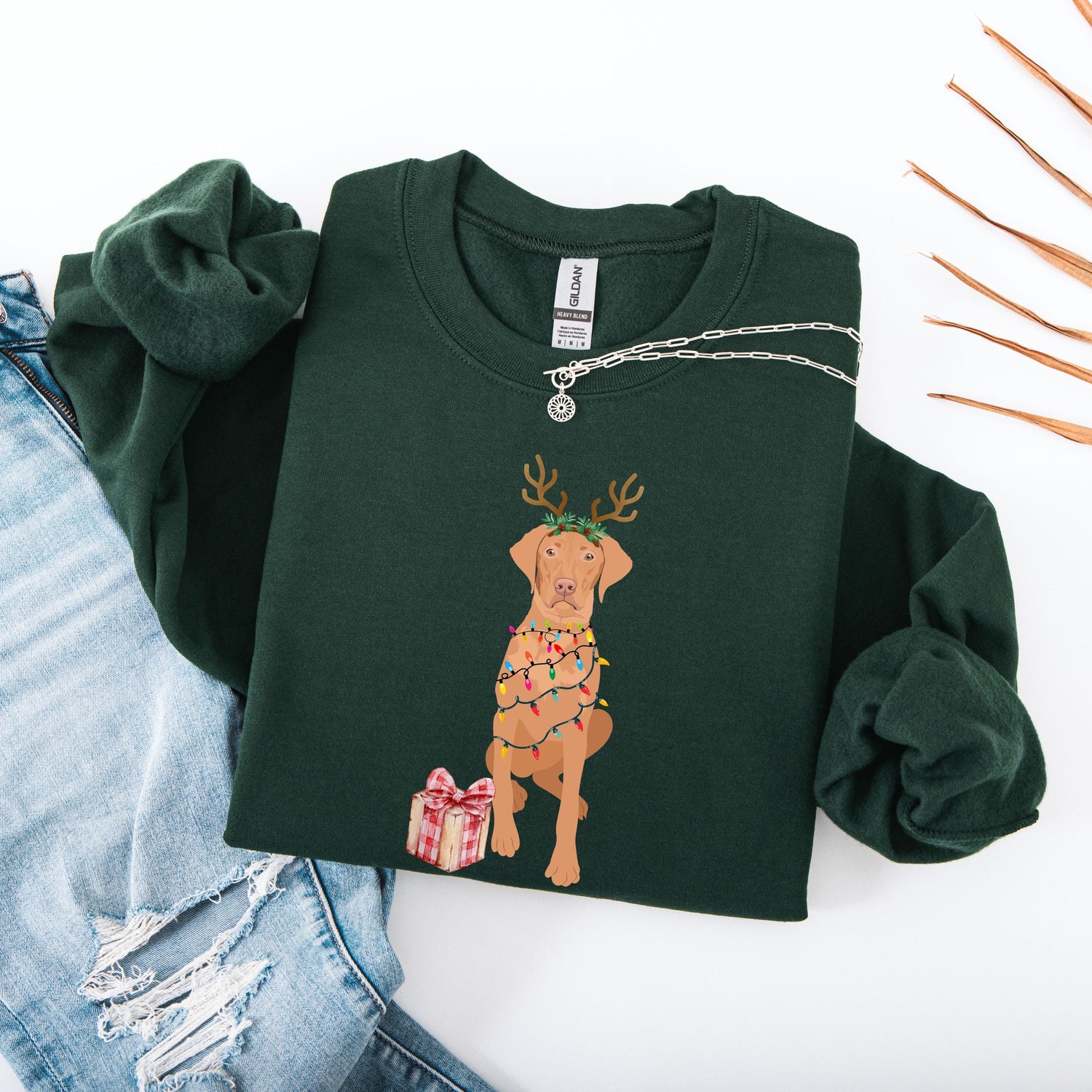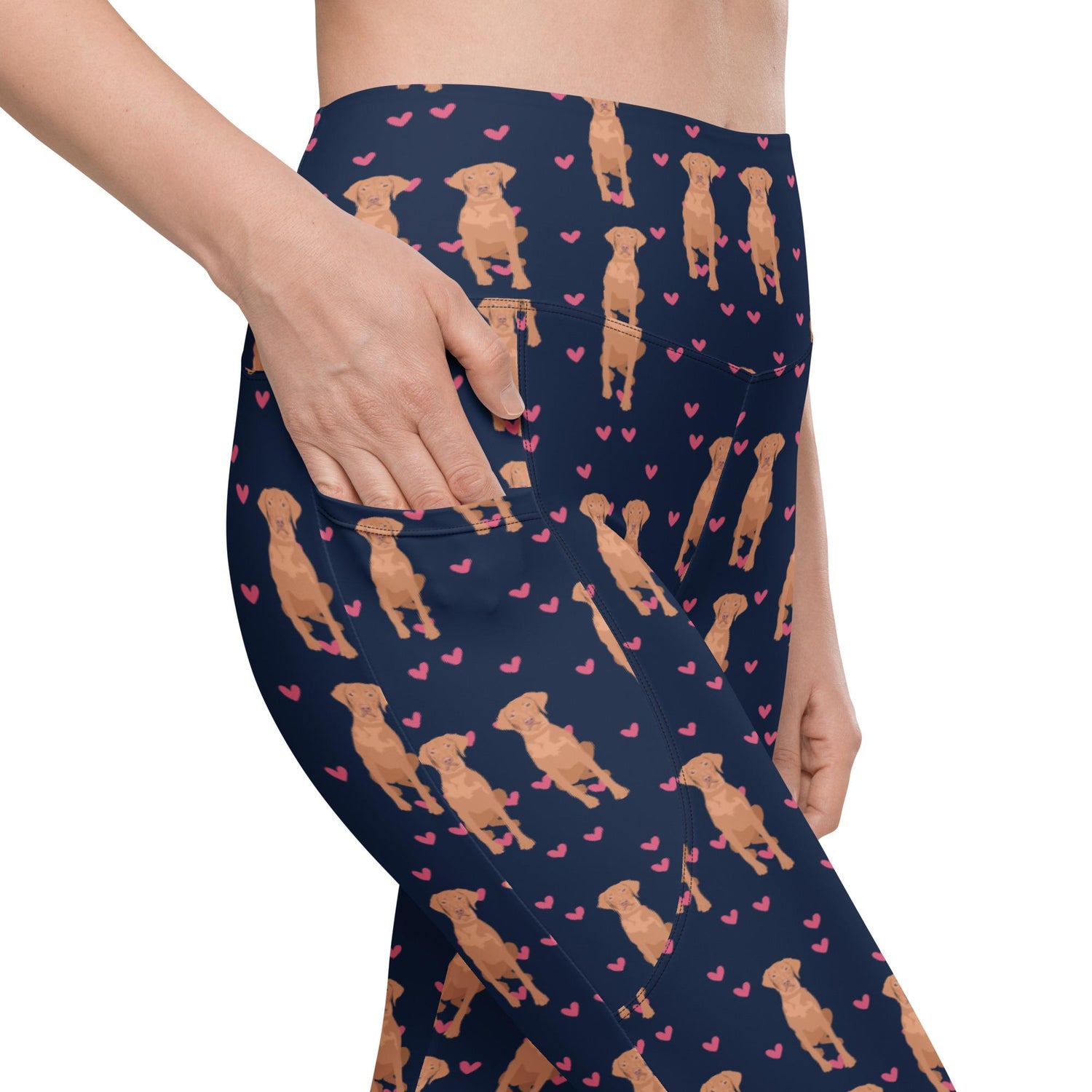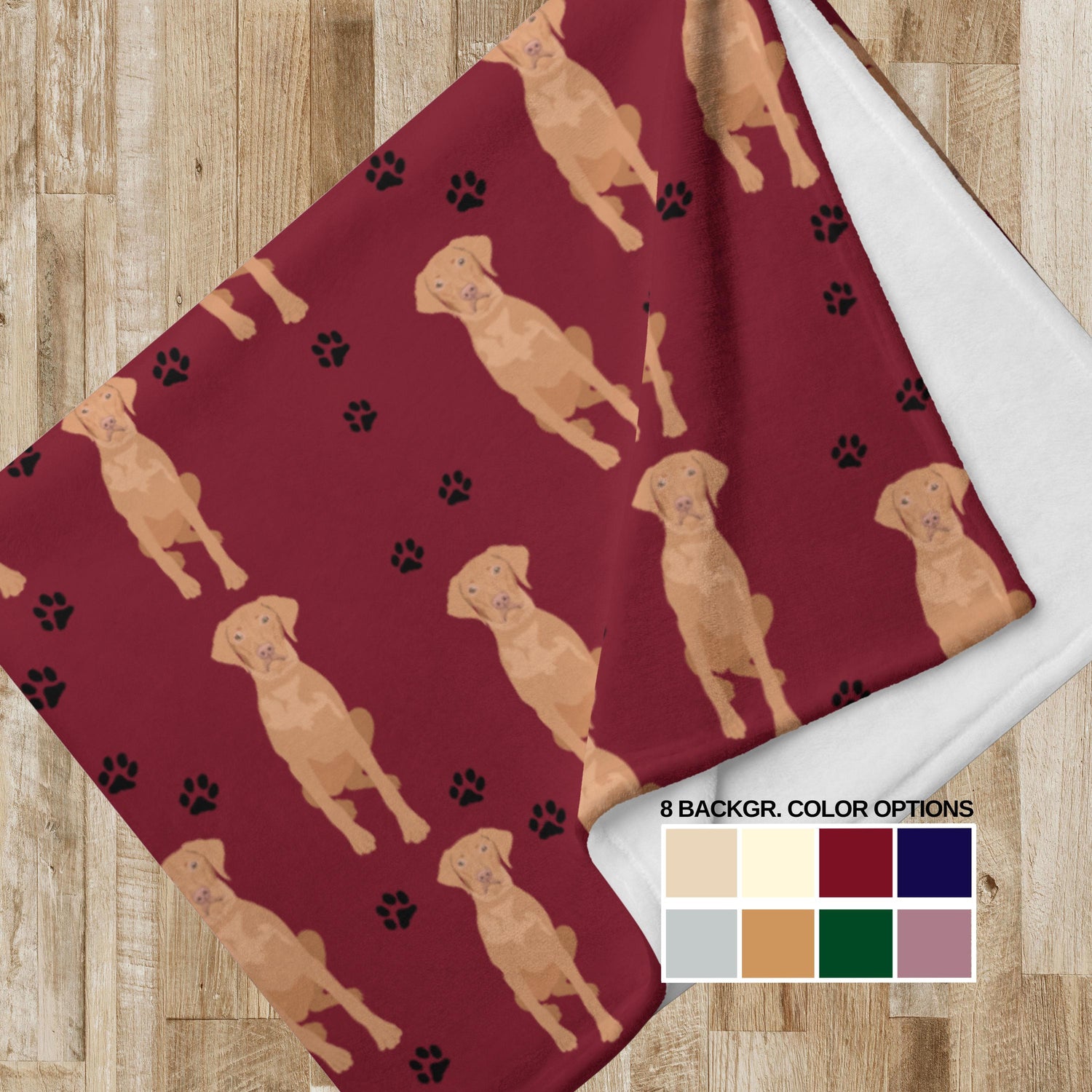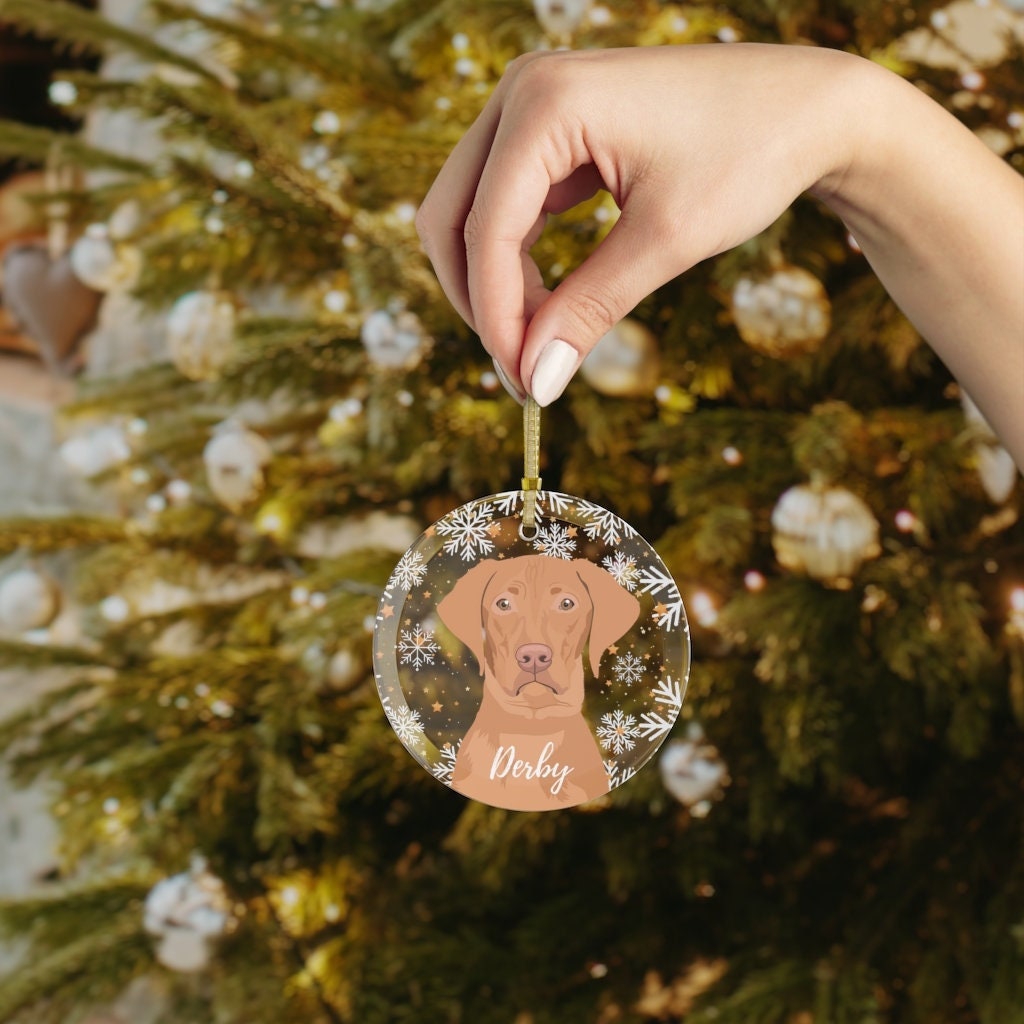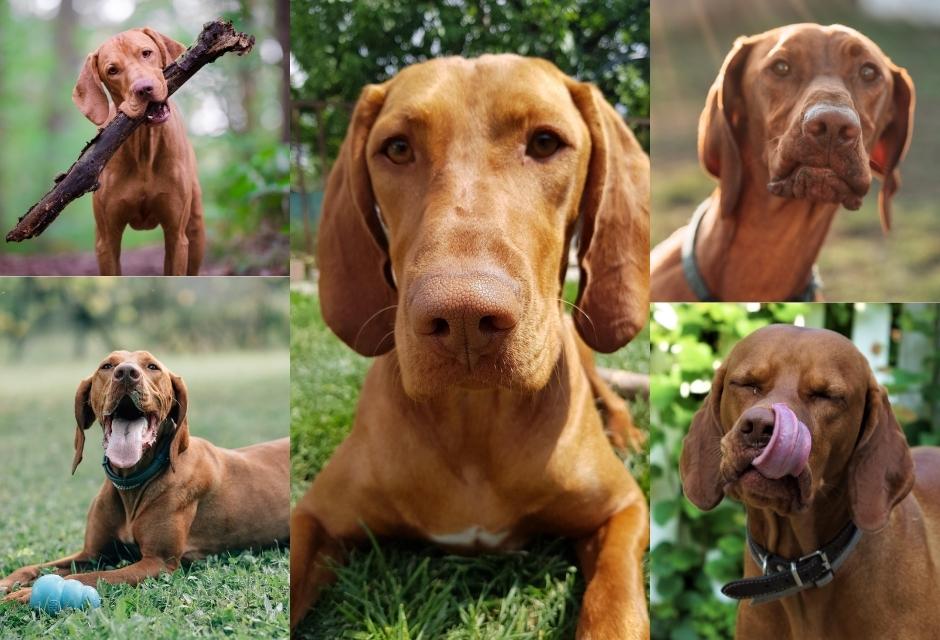
Is a Vizsla a Good Family Dog? Characteristics, Lifespan and Care Tips
Translation missing: en.blogs.article.last_updated: Anete Kozule-DzilumaShare
Vizsla dogs are catching plenty of attention for their striking looks and affectionate nature, but how do they really fit into family life?
Here, you’ll get a closer look at Vizsla characteristics, their expected lifespan, and the care they need day to day. Whether you’re charmed by their hunting background or hoping to find an energetic family dog, you’ll see straightforward advice and clear answers.
We’ll also tackle some of the most common questions about Vizsla health and what to expect if you welcome one into your home. This guide was created with the support of Reddit Vizsla community who know the breed inside and out.
What Are The Key Takeaways About Vizsla Dogs?

- Vizslas are affectionate, high-energy dogs that thrive in active families who include them in daily activities and can provide 60-90 minutes of exercise each day.
- With their gentle temperament and playful nature, Vizslas typically bond well with children, though supervision is recommended with younger kids due to the dog's enthusiastic energy.
- Vizsla dogs have a relatively long lifespan of 12-15 years and are generally healthy, though they can be prone to hip dysplasia, epilepsy, and certain autoimmune disorders.
- These "velcro dogs" need minimal grooming but plenty of companionship and mental stimulation, making them ideal for families who want a loyal, snuggly partner for outdoor adventures.
What Makes a Vizsla tick
Vizslas stand out as a recognizable dog breed, known for their rich history and unique personality. To understand what sets a Vizsla apart, let’s dive into how they look, act, and behave as companions.
Vizsla Origin and History

The Vizsla originated in Hungary, with roots dating back to the 10th century. They were bred primarily for hunting, with a lineage that includes dogs used by Magyar tribes.
These ancestors contributed to the Vizsla’s strong scenting skills and endurance in the field. This breed nearly disappeared after World War II but was restored by dedicated breeders, making them a valued sporting dog and family pet today.
How Vizsla Looks and their Coat

Vizslas are medium-sized, athletic dogs with a build made for activity. Their short, dense, smooth coat has a standout golden rust color that’s easy to spot. With no real undercoat, they don’t do well in the cold, but the upside is that their fur is low-maintenance and simple to keep clean.
This breed has a regal look, marked by expressive eyes, long ears, and a well-proportioned tail—sometimes docked, depending on kennel club rules. Their appearance highlights their roots as active upland and pointer dogs from Hungary.
Because their coats are so straightforward, Vizslas shed fairly little and are a breeze to groom—ideal for anyone wanting a tidy home. One thing to note: they aren’t hypoallergenic, so anyone with strong allergies should take care.
Vizsla Breed Standard
According to the American Kennel Club, adult males typically stand 21-24 inches tall and weigh between 55 and 60 pounds, with females being slightly smaller. Their coat is always a solid golden-rust color (red or golden tones), with no markings or patterns. This consistent color distinguishes the breed at a glance and helps with camouflage during hunting.
Vizslas' Personality and What To Expect
Vizslas are known for their incredibly affectionate and loyal natures. Often called "velcro dogs," they love sticking close to their favorite people.

As a Hungarian breed, they’re gentle, smart, and eager to please, forming deep bonds with the whole family. You can expect a Vizsla to have high energy and need for activity—regular exercise and mental challenges are a must for a happy pup.
Their hunting and pointing background means they’re driven to track, retrieve, and play. They pick up on training quickly, especially with positive, encouraging methods, since they’re quite sensitive.
Vizslas thrive on human company and can struggle if left alone too long. If you want a dog that gets involved in everything your family does, this breed may be a great match.
Behaviors You'll See In Your Vizsla

When it comes to behavior, Vizslas are all about energy and connection. You’ll see them running, playing, and taking part in agility or obedience training with enthusiasm. Keeping them active outdoors helps burn off their energy and keeps boredom (and unwanted behaviors) at bay.
At home, Vizslas tend to be gentle and affectionate. They’ll follow family members from room to room and often love to snuggle up whenever they get a chance.
Their strong hunting instincts mean they might chase smaller animals outside, but with early training and socialization, they pick-up good habits quickly. Their natural alertness and loyalty also make them somewhat protective, but aggression isn’t usually part of their character.
Socializing early helps them become friendly, well-adjusted companions for both kids and other pets.
Are Vizslas Good With Families?
Vizslas are known for being affectionate, energetic, and loyal, but how do they really fit into family life? Here, you’ll find details on what to expect when a Vizsla joins your home, how they connect with kids and other pets, and what sort of environment helps them thrive.
How Vizsla Is With Kids
Vizslas have a gentle, playful spirit and tend to bond closely with children. Their affectionate nature means they love being involved in whatever the family is doing, and many parents find their Vizsla sticks to the kids like glue—always ready for the next game or outdoor activity.
Since the Hungarian Vizsla is full of energy, they’re a great match for active children and can bring extra fun to outside playtime. Still, due to their enthusiasm and size, it’s smart to keep an eye on interactions, especially if your children are younger.
A happy Vizsla can accidentally knock over a small child during play. Teaching your kids how to approach, play with, and respect a dog makes a big difference, as does early and positive socialization for your Vizsla puppy.
If your family includes older or very active kids, these pups are often an ideal fit. With consistent training and clear household rules, a Vizsla quickly becomes a much-loved and dependable member of the family.
Getting Along With Other Pets

Vizslas have a strong hunting heritage, and this sometimes shows up as a tendency to chase—especially smaller animals. Even so, with plenty of early socialization and patience, most Vizsla dogs get along well with other dogs and, in many cases, even cats. Introducing a Vizsla puppy to your other pets works best when you take things slowly and reward gentle, friendly behavior.
Most Vizslas enjoy having a playmate, especially if the other dog is just as energetic. Since they’re naturally social and pack-oriented, they usually prefer making friends over causing trouble.
Keep in mind, though, that small animals like rabbits or hamsters might trigger their prey drive, which can make peaceful cohabitation tricky.
As with any new pet, paying close attention to initial introductions and ongoing interactions is key for keeping things safe and friendly.
What Kind Of Home Suits Vizla

Vizslas thrive in homes where they’re included in daily life and given plenty of ways to stay active. These dogs need more than just a quick walk around the block—they crave long walks, runs, or outdoor adventures to burn off their energy and keep their minds busy.
A house with a secure, fenced yard is ideal, but if you live in an apartment and are committed to daily outings, a Vizsla can adapt.
What they can’t handle well is being left alone for hours on end. Vizslas are sensitive and may develop anxiety or act out if they feel left behind.
The best homes for a family Vizsla dog include:
- Lots of daily activity—think at least an hour and a half of real exercise every day
- A mix of love, structure, and clear expectations
- Mental challenges like puzzle toys or training sessions
- A spot in the middle of all the family fun and togetherness Bringing a Vizsla into your home means welcoming an affectionate, high-energy companion who wants to be part of every moment.
Vizsla Health And How Long They Live
Vizslas are energetic, athletic dogs, but knowing what affects their health and lifespan will help you support them through every stage of life. Here, you’ll find what to expect in terms of how long your Vizsla dog is likely to be with you and the main health issues to keep on your radar.
Lifespan Of A Hungarian Vizsla

Hungarian Vizslas have a well-deserved reputation for vitality, and that often translates to a longer life compared to many other sporting breeds. Most Vizsla dogs live between 12 and 15 years.
With thoughtful care—like keeping up with vet appointments and giving them plenty of exercise—some Vizslas even outlive this range, staying young at heart and a central part of their families for many years.
Regular exercise, a balanced diet, and yearly checkups can do a lot to extend your Vizsla's life. Like other active dog breeds, Hungarian Vizslas respond well to routine veterinary care that spots problems early and keeps them feeling their best.
Because they love active pursuits like upland game hunting, running, and obedience activities, Vizslas tend to stay in good shape into their senior years.
You’ll usually notice signs of aging around 8 or 9 years old, so regular veterinary medical exams become even more important as they get older.
Health Issues To Watch For
While Vizslas are generally healthy, there are a few breed-specific health concerns you should know about:
Hip Dysplasia: Like many sporting dogs, Vizslas can develop hip dysplasia. Reputable breeders test for this condition, but it’s smart to keep it in mind and watch for signs of discomfort as your dog ages.
Epilepsy: Vizslas can be prone to seizures. If your dog experiences sudden shaking or a loss of awareness, contact your vet right away.
Cancer: Conditions such as lymphoma may appear in older Hungarian Vizslas. Early diagnosis and ongoing veterinary medical care make a difference.
Autoimmune Disorders: Issues like hypothyroidism or allergies can be a concern and are typically managed with medication from your veterinarian.
Eye Problems: Progressive retinal atrophy and other inherited eye diseases may occur, so regular eye checkups are a good idea.
Other common canine health concerns (like dental disease, heart problems, and ear infections) can show up as well. Preventive care—keeping your Vizsla at a healthy weight and staying on top of grooming—really matters for a long and happy life.
To protect your Vizsla’s health:
- Get regular check-ups and keep vaccinations up to date
- Choose breeders who test for hereditary diseases
- Make exercise and quality nutrition part of everyday life Awareness of these Vizsla health challenges puts you in the best position to keep your energetic companion happy, healthy, and by your side for years to come.
Taking care of your Vizsla
Caring for a Vizsla means matching their boundless energy and affectionate spirit with the right mix of exercise, training, nutrition, and grooming. Here’s how to support your Vizsla’s well-being so they thrive as a trusted family companion.
How Much Exercise Sporting Dogs Need

With their athletic build and history as upland pointers and hunting dogs, Vizslas truly need a lot of movement. Count on at least 60 to 90 minutes of physical activity every day.
Mix things up with brisk walks, running, or energetic games in a secure yard. Without enough daily exercise, bored Vizslas sometimes turn to loud barking or destructive habits indoors.
Try interactive games—fetch and scent-tracking are favorites that tap into a Vizsla’s natural skills and keep them thinking. Many owners also enjoy agility courses or gundog sports, which provide great outlets for the breed’s drive and smarts.
Don’t worry if your schedule is tight. Splitting exercise into two or three daily sessions (like a morning jog, afternoon playtime, and evening walk) works well for busy families. Trips to parks or hiking trails also satisfy their love of adventure.
Training Tips That Work For Smart Dogs

Vizslas are eager to learn and want to please you, but they’re sensitive souls. They respond best to positive reinforcement—think treats, toys, or simple praise for good behavior.
Start training your Vizsla puppy early. The American Kennel Club suggests short, upbeat sessions that keep things fun and rewarding, rather than overwhelming.
Avoid harsh corrections or punishment-based techniques, as these can make Vizslas anxious or shut down. Instead, stay consistent with your house rules and cues. If the whole family uses the same commands, training goes more smoothly.
Socialization is crucial. Expose your Vizsla to different people, places, and other animals early on to help them grow into confident, friendly dogs.
Mental challenges are also important. Enrichment games, nose work, and puzzle toys exercise their minds and meet their need to work things out—perfect for such an intelligent breed.
What To Feed And What Not To Feed Your Vizsla

A well-balanced diet is key to keeping your Vizsla in top shape and this applies to all dogs. Choose high-quality commercial food with meat as the first ingredient or talk with your vet about safe, homemade meals or even a raw diet.
Young puppies need small, frequent meals to help them grow, while adult Vizslas do best with two measured feedings each day.
Because they’re so active, watch your Vizsla’s weight and make sure they’re eating enough calories to match their energy output.
Supplements like fish oil can be helpful for joint and coat support, especially as your Vizsla gets older. But be careful as some Vizslas can have allergies.
Fresh water should always be on hand, and it’s best to skip treats that are fatty, salty, or sugary. If you introduce new foods or change diets, do it slowly to help prevent stomach upset. Reach out to your vet if you notice reactions like itchy skin, frequent scratching, or tummy troubles.
Grooming and Maintenance
Your Vizsla’s short, dense coat requires consistent care to stay healthy and sleek. Regular attention to their coat, nails, and teeth keeps them comfortable and supports their overall well-being.
Brushing and Bathing: Brush your Vizsla once a week using a soft-bristle brush or grooming mitt. Bathe them every 2 to 3 months or when they get particularly dirty. Always use a mild, dog-safe shampoo.
Nail and Dental Care: Trim your Vizsla’s nails every 3 to 4 weeks. For dental hygiene, brush their teeth at least 2 to 3 times a week using a toothbrush and toothpaste made for dogs.
Ear Care: Check your dog’s ears regularly and clean them gently to prevent infections, especially since Vizslas have floppy ears.
Bringing a Vizsla into your family
The Vizsla dog breed is all about love, energy, and loyalty. If you’re ready to welcome one into your home, it’s vital to find the right dog and understand responsible ownership.
Adoption and Responsible Ownership
Whether you buy or adopt, responsible ownership starts with careful research.
- Finding a Vizsla: You can find Vizslas through reputable breeders, breed-specific rescues, or national adoption networks.
- Choosing a Reputable Breeder: A reputable breeder prioritizes health, temperament, and breed standards. Look for breeders who perform health screenings for conditions like hip dysplasia and epilepsy and are transparent about the puppy’s parents.
- Rescue Organizations: Adopting from a Vizsla rescue is a great way to give a dog a second chance. Rescues often provide medical care and temperament evaluations.
The best homes for a family Vizsla dog include:
- Lots of daily activity—think at least an hour of real exercise every day
- A mix of love, structure, and clear expectations
- Mental challenges like puzzle toys or training sessions
- A spot in the middle of all the family fun and togetherness But, if your days are long and busy away from home or you prefer a low-key lifestyle, a Vizsla may not be the right match.
Common questions about Vizslas
The Vizsla dog breed sparks plenty of questions, especially from families exploring life with one of these affectionate Hungarian pointers. Here are straightforward answers to the most common things folks want to know.
Is a Vizsla a good family dog?
Yes, the Vizsla is often a fantastic family dog. Thanks to their affectionate personalities, intelligence, and easy adaptability, they fit in well with kids and active families. Vizsla dogs thrive when they’re a true part of daily life, joining in everything from playtime to weekend adventures. Their loyalty and gentle attitude help them bond with every family member. Just keep in mind, these pups are high-energy and need regular exercise and attention. Without enough daily activity, a Vizsla pet can get restless or bored.
Why do Vizslas cost so much?
Vizsla puppies can be pricey, and there are solid reasons behind that. Reputable breeders invest in health checks for common hereditary problems like hip dysplasia and eye disorders—both big concerns in sporting breeds such as the Hungarian Vizsla. Add regular vet visits, vaccinations, and careful socialization in those early weeks, and costs go up. The breed’s rising popularity and limited numbers from responsible kennels also play a part. You might pay less to adopt through Vizsla rescue dogs or shelters, though those fees usually help cover medical care and rehoming expenses.
What does a Vizsla actually cost?
Expect to pay anywhere between $1,200 and $2,500 for a Vizsla puppy from a reputable breeder in the US, depending on pedigree, region, and the breeder’s reputation. If the pup’s parents were top hunting dogs or American Kennel Club show winners, prices might be even higher. That’s just the start—factor in food, routine veterinary visits, training sessions, and grooming supplies every year. Emergencies or surprise health issues can add extra costs too. If you’re considering adoption, most rescue organizations charge between $300 and $600, including care and medical needs up to adoption.
Do Vizslas like to snuggle?
Without a doubt—Vizsla dogs are famous snuggle buddies. Labeled “velcro dogs” for a reason, they crave physical closeness, often stretching out on your lap, leaning by your side, or curling up for naps with their favorite humans. This constant desire to be close goes hand in hand with their gentle temperament and strong family attachment. Vizsla dogs often become comforting companions, loving to share affection with both adults and older, responsible kids.

